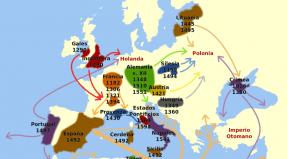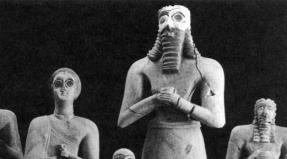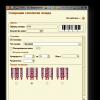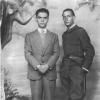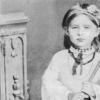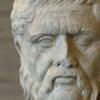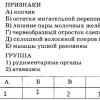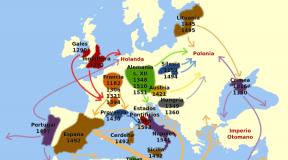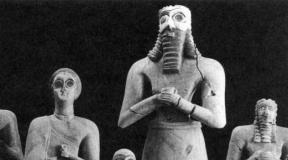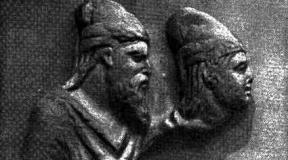Tell me your blood type and I will tell you who you are. Blood types among different peoples, as well as connections with diseases Common blood type among Jews
Some scientists argue that the fourth blood group (AB) was the last to form. " Unlike other blood groups, the fourth blood group was formed as a result of mixing the Caucasian population with the second blood group (A) and the Mongols with the third group (B). Some of these mergers were of a peaceful nature, but partly these mixtures occurred as a result of the turmoil that marked the great “Migration of Nations” at the end of the Ancient Period (3rd - 8th centuries AD).”.
The distribution of the fourth blood group (AB) (average in the population, %) by country is shown in Table 4.
| % | Country: peoples |
| 11,25 | South Korea |
| 9,5 | Japan: Japanese 9.5% |
| 8,1 | Bengal 8%: Indian 8.1% |
| 8,1 | Russia 7%: Russians 8.1% |
| 8 | Finland |
| 8 | Poland |
| 7,9 | Hungary: Hungarians 7.9% |
| 6,9 | Hong Kong, China 7.3%: Chinese 6.9% |
| 6 | Sweden |
| 5,3 | Arabs |
| 5 | Denmark |
| 5 | USA |
| 4,9 | Belgium |
| 4 | France |
| 3,2 | UK 4%: English 3.2% |
| 3,1 | Netherlands: Dutch 3.1% |
| 3 | Canada |
| 1,6 | Australia 3%: Australians 1.6% |
| 0 | Dunkers (USA, emigrants from Germany in the early 18th century) |
| 0 | Labrador |
| 0 | Baffin Island |
| 0 | Indians of Central and South America |
Table 4.
Meanwhile, the second blood group (A), as we showed above, is associated with the places of contact between the Turkic peoples and Caucasians. Therefore, in order to consider the fourth blood group (AB) as the result of the fusion of the second (A) and the third (B), it must be assumed that the Semitic nomads from East India crossed with the Turkic nomads from Northwestern China - here we especially draw your attention: Eastern India smoothly transitions into Northwestern China, that is, these “different” nomads came from an area located on the very border of these two geographical zones.
Meanwhile, some researchers come to different conclusions. They attribute the formation of the fourth blood group (AB) to the period of mass migrations of Western peoples to the east 900 - 1000 years ago, based on the fact that the fourth blood group (AB) gene is extremely rare before the 9th century. BC. During exhumations of prehistoric burials in Hungary, the fourth blood group gene was not discovered until the Lombard period (5th to 7th centuries AD). It turns out that this indicates that until the 5th century, Europeans with the second (A) and third (B) blood groups did not come into contact with each other, or at least did not mix through marriage.
However, from our point of view, such conclusions are erroneous. The appearance of the fourth blood group (AB) gene in Europe cannot be associated with the resettlement of Europeans to the East. This process should have had the opposite direction - from east to west (since Europe is not located to the east of the countries of the East). The Lombards mentioned may serve as a key to understanding the situation, since they belong to the Suevian tribe, which was the name given to the nomadic Germanic tribes, in contrast to the sedentary ones. The common origin of the Suevi and Mongols was also pointed out by archaeologist A.F. Veltman in his work “On the Suevi, Huns and Mongols.” That is, it was the nomadic Lombards, most likely of Semitic origin, who brought the fourth blood group (AB) gene to Europe. The appearance of Mongoloids (mainly Jews of Khazar origin) in Europe in the 5th - 7th centuries was not uncommon. One has only to remember the Turkic-speaking Jews of the Bulgarians, as well as the Avar Khaganate, Hungarian Jews, Karaites, etc.
As we have already said, it is assumed that the fourth blood group (AB) arose not as a result of exposure to the external environment, but as a result of mixed marriages (A + B). Meanwhile, the territory of such marriages should again be Eastern India, from where both the second (A) and third (B) blood groups spread. That is why the fourth blood group (AB) is most abundant among Gypsies, Hungarians (Ural-Altaians) and Ukrainians (the highest influence of the Jewish element on whom is well known).
Let us remember that “gypsies are a nomadic people who emerged from northwestern India in the 10th century. and through Persia, Armenia, Asia Minor, the Greek islands, northern Africa, came to Europe (Romania, Hungary, Germany) in the 13th - 15th centuries.” .
Ukrainians acquired the fourth blood group (AB) “with the help” of Polish Jews, Hungarians, Pechenegs, etc.
Thus:
- The fourth blood group (AB) is not immune to antigens A and B.
- the fourth blood group (AB) does not completely correspond to either Caucasoids, Mongoloids, or Australoids;
- the possession of the fourth blood group (AB) depends on the presence of the Jewish-Gypsy component in the ethnogenesis of the people in question;
- possession of the fourth blood group (AB) coincides with the settlement areas of Jews and Gypsies;
- the place of generation of the fourth blood group (AB) is the region of Eastern India (south of the Himalayas)
Scientists have found that character traits are transmitted through blood vessels
Photo: GLOBAL LOOK PRESS
Change text size: A A
"Ketsu-eki-gata"
If we in Russia are asked: “What is your zodiac sign?” - then in Japan - “What is your blood type?” According to the Japanese, blood determines the character and individual characteristics of a person to a greater extent than distant stars. Carrying out tests and recording blood type is called “ketsu-eki-gata” here and is taken very seriously.
HR managers use “ketsu-eki-gata” when hiring employees, marketing specialists use it to predict demand for intended products, and most people use it to choose friends and life partners. Devices that perform express blood group analysis “by blood spot” are often found at train stations, department stores, and restaurants. In Japan, and more recently in the United States, there are even organizations called the AB0 Society, created to help individuals and business executives make the right decisions based on blood characteristics.
It is possible that such services may appear in Russia, says psychotherapist, senior researcher at the Human Health Research Center Alexander Sherman. - It’s no secret that today in many commercial structures in the personnel department there are freelance astrologers and palmists who tell bosses what kind of person to hire and for what position, where he could reveal all his talents. Therefore, in addition to a personal astrological (natal) chart and palm prints, you may soon have to give your employer a drop of blood.
We are all brothers and sisters
But how can blood type influence character? Many scientists believe that this is due to an evolutionary process during which, based on changing climatic conditions and lifestyles, blood transformed its qualities.
Blood type is older than race and has more fundamental properties than ethnicity, says Dr. Sherman. - It is not the result of “trial and error” genetic development, which is a sequence of accidents. Each of the blood groups was an evolutionary-logical response to a series of various changes occurring with the planet and “homo sapiens” over thousands of years. Thus, early racial changes began in a world that was almost entirely inhabited by people of group 0 (I). However, this division into races, associated with human adaptation to a previously unfamiliar diet, environment, and climate, was also part of the driving force of evolution, which ultimately led to the emergence of other blood groups.
Some anthropologists generally believe that dividing humanity into races is too simple. They say that blood type is a much more important indicator of individuality than race. In fact, an African and an Indo-European with group A (II) can exchange organs or blood, have the same habits, digestive functions and immune structures. But for an African with group A (II) and an African with group B (III), for example, such coincidences are very rare.
Our ancestors left each of us a special legacy, the outlines of which are “imprinted” into our blood group, says Alexander Nikolaevich. - And it is constantly present in the nucleus of every cell in the body. And people with the same blood type have much more in common than we ever imagined. Perhaps many of us are actually brothers and sisters. By blood.
HELP "KP"
What is the AB0 system
In 1891, Australian scientist Karl Landsteiner conducted research on erythrocytes - red blood cells. And I discovered an interesting pattern: in some people they differ in sets of antigens - substances that cause an immune reaction and the formation of antibodies. The scientist designated the found antigens with the letters A and B. Some have only antigens A, others only B. And still others have neither A nor B. Thus, the research of Karl Landsteiner divided all of humanity into three parts, in accordance with the properties of the blood : Group I (aka 0) - there are neither A nor B antigens; Group II - there is A; III - with antigen B.
In 1902, researcher Decastello described the fourth group (antigens A and B are found on red blood cells). The discovery of two scientists was called the AB0 system. Blood transfusion is based on it.
People with the first blood group 0(I) are universal donors, since their blood, taking into account the ABO system, can be transfused to persons with any blood group. Holders of the fourth blood group AB (IV) - like Jesus Christ - belong to the category of universal recipients - they can be transfused with blood of any group.
However, now doctors are striving to transfuse a person with an identical blood type. This rule is deviated from only in extreme cases.
SKEPTIC'S OPINION
Can a "type 0" be president?
Candidate of Psychological Sciences Alexey PRONIN:
All attempts to classify people look a little sinister. If you say: “Type A is such and such” or “Type B is that,” then sooner or later you will inevitably hear a statement like: “Type AB is better than all the others” or “Only type 0 can be president.” Thus, caste division may prevail. By the way, it is highly developed in Japan. For example, this can be seen in job advertisements, when some company announces that it is looking for a person for a vacant management position ONLY with blood type B. And if we elect the president of the country this way, will this lead to anything good?
What else can you find out about yourself?
(Compiled by Japanese scientist Poshitake Nomi and American naturopathic doctor Peter D'Adamo)
Blood type
0 (I) "Hunter"; 40 to 50% of all people have it
Origin
The oldest and most widespread appeared 40,000 years ago. The ancestors led the lifestyle of hunters and gatherers. They took what nature gave them today and did not care about the future. Defending their interests, they were able to crush anyone, regardless of who he was - friend or enemy. The immune system is strong and resilient.
Character qualities
These people have a strong character. They are determined and self-confident. Their motto is: “Fight and search, find and don’t give up.” Excessively mobile, unbalanced and excitable. They painfully endure any, even the most fair, criticism. They want others to understand them perfectly and immediately carry out their orders.
MEN are very skilled in love. They are most turned on by unavailable women.
WOMEN are greedy for sex, but very jealous.
Adviсe
Try to get rid of narcissism and arrogance: this can seriously interfere with achieving your goals. Stop fussing and rushing things. Remember that a person who strives to achieve his goal at any cost, who is indomitably striving for power, dooms himself to loneliness.
Blood type
A (II) “Farmer”; 30 - 40% have it
Origin
Generated by the first forced migrations of the population, it appeared when the need arose to switch to eating agricultural products and accordingly change the way of life. Appeared between 25,000 and 15,000 BC. Each individual was required to be able to get along, get along, and cooperate with others within a densely populated community.
Character qualities
They are very sociable and easily adapt to any environment, so events such as changing their place of residence or work are not stressful for them. But sometimes they show stubbornness and an inability to relax. Very vulnerable, hard to bear insults and grief.
MEN are shy. Romantics at heart, they express their love with their eyes. They love to feel maternal care, and therefore often choose women older than themselves.
WOMEN are shy too. They make excellent wives - loving and devoted.
Adviсe
Don't aspire to leadership positions. But try to find like-minded people so that they support your interests. Don't relieve stress with alcohol, otherwise you will become addicted. And don't eat a lot of fatty foods, especially at night.
Blood type
In (III) "Nomad"; 10 - 20% have it
Origin
It appeared as a result of the merging of populations and adaptation to new climatic conditions more than 10,000 years ago. It represents nature's desire to strike a balance between enhanced mental activity and the demands of the immune system.
Character qualities
They are open and optimistic. Comfort does not appeal to them, and everything familiar and ordinary brings boredom. They are drawn to adventure, and therefore they will never miss an opportunity to change something in their lives. Ascetics by nature. They prefer not to depend on anyone. They do not tolerate unfair treatment: if the boss yells, they will immediately leave work.
MEN are true Don Juans: they know how to beautifully look after women and seduce.
WOMEN are very extravagant. They can quickly win a man’s heart, but they are afraid to marry them, not believing that they are capable of a reverent attitude towards the family hearth. And completely in vain! Over time, they become good housewives and faithful wives.
Adviсe
Think about it: maybe individualism is your weakness? If there are no people close to you in spirit around you, then this is the result of your independence. The reputation of a “womanizer” or “whore” only masks the fear of love. The wives of such people have to get used to cheating, because in all other respects they are good family men.
Blood type
AB (IV) “Riddle”; only 5% of people have it
Origin
It appeared unexpectedly about a thousand years ago, not as a result of adaptation to changing living conditions, like other blood groups, but as a result of the mixing of Indo-Europeans and Mongoloids.
Character qualities
People of this type love to boast that Jesus Christ had type AB blood. The proof, they say, is the analysis of blood found on the Shroud of Turin. Whether this is true has not yet been proven. But, in any case, people with the fourth blood group are quite rare. They are distinguished by a soft and meek disposition. Always ready to listen and understand others. They can be called spiritual natures and multifaceted personalities.
MEN are attracted by their intelligence and originality. Very sexy. But their desire to make love day and night does not mean that they are filled with deep feelings.
WOMEN also have sexual attractiveness, but they are very demanding in choosing men. And it won’t be easy for her chosen one, because she requires a lot of attention.
Adviсe
You have a significant drawback: you are very indecisive. Perhaps this is partly the reason for your lack of conflict: you are afraid of ruining your relationship with someone. But you are in constant internal conflict with yourself, and your self-esteem suffers greatly from this.
BY THE WAY
Your likelihood of dementia and early aging depends on your blood type
The study found that blood types play an important role in the development of the human nervous system. This means they can also influence the development of cognitive impairment [check yourself].
TESTED FOR YOURSELF
How I lost weight based on blood type
What would it be like to eat to avoid gaining weight? This question plagues millions of women. The KP correspondent also wondered about it and decided to try a blood type diet. The body adjusted to the new nutrition system in 2 months ().
Predominantly omnivorous, the third group was probably the only one who, eating only “sour milk and horse blood” (as one Roman historian described it), remained resistant to disease.In addition to the ability to withstand epidemics, women of the third blood group have a higher reproductive capacity than carriers of the first and second blood groups; they also tend to enter menstrual age earlier than others.
High concentrations of the third blood group are directly related to the pre-existing demographic situation.
Since the caste system arose as a result of foreign conquest, there is a possibility that the third blood group gene was brought to India by foreigners.
In a study of 14 caste groups, besides the Christian and Muslim population of West Godavari, Andhra Pradesh, among all Hindu castes, with the exception of Brahmins, Kshatriyas and Reddis, a predominance of the third blood group was noted over the second.
The results of a study of the distribution of blood groups along the Silk Road of northwestern China showed a clear increase in the concentration of the third blood group, especially when comparing people of Mongolian origin with Caucasian peoples.
An almost continuous mountain range stretches from the Urals in Russia to the Caucasus Mountains in Asia, and further to the Pyrenees in southern France. Thanks to this mountain belt, blood groups were distributed along two routes: in the northern and southern directions.
The conquerors moving south became the ancestors of the Mediterranean and Western European peoples, and, mainly, the owners of the second blood group.
The Ural Mountains prevented mass migration of peoples from Asia to the west, although small groups of Caucasians still managed to cross into Western Europe, “bringing” with them the gene for the third blood type, which they acquired when mixing with the Asian Mongols.
This natural barrier served to separate blood groups into Western - second and Eastern - third.
Mongols with the third blood type continued to move northward, to where modern Siberia is located. They developed a culture different from other peoples, based on the breeding of herd animals and the preparation of dairy products.
These nomads were excellent horsemen; they roamed the Siberian expanses and the territory of the Great Steppes. They were short, stocky and had almost exclusively blood type III.
A recent study using sophisticated polymerase reaction technology determined the blood types of dried human skeletal remains discovered in the Taklamakan Desert in 1912.
Of the 9 subjects examined, 8 had the third blood group.
At different periods, the Mongols migrated to eastern Europe, once they managed to reach Vienna.
Of course, it was these nomadic tribes that spread the third blood group gene among the European population.
Two main groups of carriers of the third blood group took shape as a result of the Neolithic revolution in Asia: the agricultural, relatively inactive people living in the south and east of Asia, and the northern and western nomads.
Traces of this split can be found today in the national South Asian cuisine: it contains virtually no dairy products. In Asian culture they are considered a barbaric food.
In the Far East, tribes of Semitic nomads who had a third blood group could penetrate pre-existing Neolithic cultures either peacefully or aggressively.
Semitic peoples known as the Hyksos ruled Egypt during the Second Intermediate Period.
It is not known for certain where these foreign rulers came from; there is only an assumption that they were Asians.
The word "hyksos" in Arabic means "foreign rulers".
It was once believed that a foreign ruler in Egypt would certainly be overthrown, but instead, it seems that the opposite happened: the foreigners completely subjugated the Egyptians.
It is likely that the number of these outsiders in the Delta region increased until they became a powerful political force.
During their reign, Egyptian culture and rituals were preserved, indicating the complete assimilation of these foreign "kings".
Persian suzerainty probably also contributed to the widespread distribution of the third blood group gene among the high society of Egypt, for the Egyptian mummy "Izet Iri Khetes", dating back to 3 thousand BC. e., in the course of a recent study, the third blood group was established.
It is curious that in general in Africa (regardless of race) there is a higher prevalence of the third blood group compared to Europe and the Far East.
Whether this is the result of a mixture of the original genes of the third blood group is unknown, but such a predominance indicates a deeper and more ancient nature of the connection between ancient Egypt and Africa (its region preceding the Sahara) than is generally believed.
The characteristics of the blood groups of various Jewish peoples have long been the subject of close attention of anthropologists.
Regardless of nationality or race, there is a tendency to increase the number of carriers of the third blood group.
Ashkenazim and Sephardim, the two major religious groups of Eastern Europe and the Far East and Africa respectively, have a large percentage of the third blood type; and there are no noticeable differences between them.
Babylonian Jews are very different from modern Arabs living in Iraq: among the latter, those with the second blood group are much more common, and the third group is even more common.
The ancient community of Jews of the Tafilalet Oasis, formerly living in Morocco and now dispersed throughout the world, also had a high percentage of the third blood group gene, about 20-29% of the entire society.
Karaites, among whom there is an incredibly large number of carriers of the third blood group, are members of a Jewish sect founded in Babylonia in the 8th century. BC e.
The Karaite community still lives in Lithuania; it is known that they moved there from Crimea.
Karaites consider themselves Jews by religion, not by race.
Ashkenazi Jews descended from 350 people
This is not stated by me, but by Jewish scientists who have mastered a new science - DNA genealogy.
Genetic genealogy uses DNA tests in conjunction with traditional genealogical research methods. The success of traditional methods of recognizing a person’s ancestry depends entirely on the safety and existence of various documents. DNA genealogy claims that every person carries within himself a kind of “biological document” that cannot be lost - this is human DNA. Genetic genealogy methods allow you to gain access to that part of DNA that is passed unchanged from father to son along the direct male line - the Y chromosome.
This material was prepared by Robert Berg, and it was published by a Jewish website http://www.jewish.ru
All modern Ashkenazi Jews descend from a group of approximately 350 people who lived 600-800 years ago. These are the results of a study by an international group of geneticists led by Columbia University professor Shai Carmi, published this week in the journal Nature Communications. Scientists sequenced the genomes of 128 Ashkenazi Jews, comparing them with the genomes of representatives of other Jewish ethnic groups.
Researchers have concluded that modern Ashkenazim are descended from Jewish immigrants from the Middle East who mixed with the Jews who inhabited Europe during the Middle Ages. These findings refute the theory put forward by a number of researchers of the origin of Ashkenazi Jews from the Khazars, a people of predominantly Turkic origin who lived in the Lower Volga region, the North Caucasus and Crimea.
New work by geneticists sheds light on some aspects of the history of migrations of the Jewish population. In the XIII-XV centuries, Jewish communities were expelled from many countries of Western Europe. The expulsion from Spain in 1492, although it was the most widespread, was not the only one in this series. In 1290, Jews were expelled from England, and in 1394 from France. Jewish refugees from these countries formed the core of the Ashkenazi community.

Scientists have concluded that a number of genetic changes have occurred in the Ashkenazi population that distinguish them both from other Jewish ethnic groups and from modern European ethnic groups. Some of these mutations have led to the emergence of specific genetically determined diseases that are prevalent predominantly or exclusively among Ashkenazi Jews. These include a predisposition to breast and ovarian cancer in Ashkenazi women, Tay-Sachs disease (a rare hereditary disease of the nervous system), leucinosis (an inborn error of metabolism) and a number of others. However, any human population has its own hereditary diseases. Thus, Wolman's disease and allergies to legumes are common among Sephardic Jews.
Studies of the genomes of various ethnic groups answer the question of why marriages between close relatives are prohibited in most human societies. Every person is a carrier of at least several harmful recessive mutations. But since they are localized in mismatched regions of chromosomes, the probability of their transition to an active state is very low. Marriages between relatives significantly increase the likelihood that both partners are carriers of the same genetic mutation and that they will produce defective offspring.
Among Ashkenazi Jews, harmful genetic mutations are common because they went through a so-called “bottleneck” in their history, the researchers note. The “bottleneck” effect is a reduction in the genetic diversity of a population due to a critical decrease in its size, which is subsequently restored. This leads to an increase in the number of consanguineous marriages and, accordingly, to the spread of genetically determined diseases. The consequence of this is the so-called "founder effect": When a new population is created by a small group of people, all their offspring will have reduced genetic diversity... .
* * *
So we have scientific hypothesis about the origin of Ashkenazi Jews, based on DNA analysis.
Today Ashkenazim are the largest branch of world Jewry, whose share in world Jewry reaches 80%. The word itself "Ashkenazi" translated from Hebrew means - Germany.
The second branch of world Jewry—Sephardic Jews—accounts for, respectively, 20%. Word "Sephardi" also indicates the geographical origin of this tribe, translated from Hebrew “Sephardi” - Spain.
What important and remarkable things did I personally see in the publication? "Ashkenazi Jews descended from 350 people"?
Firstly, the results of a study by an international group of geneticists coincided with the fact that the Jewish Torah contains only the 7th century history of the Jewish people. This, again, is not my statement, but that of Jewish priests - rabbis. For their part, Jewish geneticists claim that all modern Ashkenazi Jews descend from a group of people numbering approximately 350 people who lived 600-800 years ago. There is virtually nothing to object to this dating, except perhaps unsubstantiated words from our completely false history.
Secondly, the statement about the 7-century history of the Jews coincides perfectly with my hypothesis, with my vision that these two Jewish branches (communities) - Ashkenazim And Sephardim- appeared 7-8 centuries ago, not somewhere in Europe in general, but specifically in Germany And Spain. Moreover, Germany, which gave birth to the Ashkenazim, was the main components of the Holy Roman Empire, which officially existed from 962 to 1806.
Thirdly, given the ferocity and mercilessness of the rulers of Spain and the Holy Roman Empire towards various “dissidents” and strangers, these two groups of Jews clearly could not have appeared there on the principle "self-assembly" from some groups of refugees expelled from other regions of the world.
It is impossible to believe that at a time when the royal Habsburg dynasty, with the support of the Roman Catholic Church, organized “crusades” against “heretical peoples”, and in Spain, the Catholic Inquisitors declared a “hunt for witches and sorcerers”, while people were exterminated in thousands, immediately two branches of world Jewry there, on the same territory, calmly multiplied and multiplied, and as a result of closely related inbreeding, producing genetically diseased offspring.
Fourthly, in order for 350 people to give birth to millions of souls (!) in a few hundred years, they had to live literally like chickens on a poultry farm, and the women of this tribe had to get pregnant and give birth to Jewish children every year, and in throughout your entire childbearing period!
As often happens in our lives, when we are faced with a particular phenomenon or mystery, we rely on scientists who must study all the nuances of this phenomenon or phenomenon and try to somehow explain it, at least with the help of a hypothesis. In the case of Ashkenazi Jews, and Sephardim too, we have the same mystery.
Sergei Albertovich Sall, Candidate of Physical and Mathematical Sciences, Associate Professor, Secretary of the St. Petersburg Section of the Russian Physical Society, explains the origin of millions of Ashkenazi Jews on the territory of medieval Prussia by the existence secret plan, which once matured in the minds of the so-called "black aristocracy".
Black aristocracy- these were originally several clans that ruled the peoples in the territory of Eurasia under the coat of arms of the double-headed black eagle.

At first it was the coat of arms of the Dukes of Bourbon and the Counts of Clermont of the Capetian House, from which came the kings of France, Spain, Portugal and the Latin Empire.
Encyclopedic reference: Roman Empire e; 1204-1261) - a medieval empire formed after the Fourth Crusade and the temporary liquidation of the Byzantine Empire. The name of the empire in Latin was Romania.
The same black double-headed eagle was the royal coat of arms of England in 1198-1340.
The so-called “black aristocracy” dreamed of world rule, for this purpose wars of conquest and “crusades” were organized, but when it became clear to them that open military expansion was not bringing as good results as they would like, then the decision was made to create two Jewish branches that were supposed to appear on the territory of Germany and Spain and literally become the secret weapon of the Holy Roman Empire. The Jews were destined to become saboteurs, invaders and destroyers from within foreign fortresses and states, as well as miners of gold and money, without which no power on earth could exist.
At this point in the story, I want to once again return to the idea voiced in the article cited at the very beginning about "genetically determined diseases among Ashkenazi Jews." According to an international group of geneticists led by Columbia University professor Shai Carmi, "when a new population is created small group people, all their offspring will have reduced genetic diversity. Thisso-called "founder effect" ".
It seems to me that the author of this note, Robert Breg, as well as an international group of geneticists studying in Jews that part of DNA that is passed unchanged from father to son along the direct male line - the Y chromosome, completely incorrectly formulated their conclusion that "Ashkenazi Jews descend from a group of people numbering approximately 350 people who lived 600-800 years ago," or, they specifically filled their output ambiguity.
Initially, I, like most people who read this material, came to the understanding that there was some group of Europeans, numbering 350 people, who gave birth to a large tribe of Ashkenazi Jews. And now that I have thought about all of the above, I already understand correctly that 350 people are the fathers of Ashkenazi Jews.
The number of Ashkenazi mothers is not and cannot be discussed at all, since DNA genealogy allows us to track only the transmission of hereditary information through the male line!!!
After this all that remains is to exclaim: Finally, the right trace in Jewish history has been taken!
On the one hand, people's faces are a kind of genetic passport. By looking at a person’s face, by his features, as well as by his eyes, a specialist can quite easily determine what kind of genetics this or that person has inherited. On the other hand, it is their faces that people try to capture for history, for their descendants, for which they turn to artists or photographers.
Portraits of various rulers of European countries from medieval to present - this is what can now answer the questions: WHAT “small group of people” gave the Ashkenazi Jew the “founder effect” - reduced genetic diversity, and AS A RESULT OF WHAT, currently, every fourth Ashkenazi Jew suffers from at least one genetic anomaly? But many Ashkenazis have a whole bunch of genetic diseases that are inherited from parents to children, as the article talks about "Genetic diseases of the Jews!", published like the first on a Jewish website.
So, let's look at the portraits of at least some European rulers of the past.

Portrait of the Holy Roman Emperor Maximilian II with family, ok. 1563 Artist Giuseppe Arcimboldo.
Pay close attention to the eyes of both adults and children. The artist tried to convey their special shape, common to the entire family. Eyes are a kind of genetic identifier of this family.
Encyclopedic reference: Maximilian II(German Maximilian II, July 31, 1527, Vienna - October 12, 1576, Regensburg) - Holy Roman Emperor and Archduke of Austria from July 25, 1564 until his death, King of the Czech Republic (crowned May 14, 1562 under the name Maximilian I), king Germany (Roman King, crowned November 28, 1562), King of Hungary and Croatia (crowned September 8, 1563). Representative of the dynasty Habsburgs.

Fragment of the painting "Queen Victoria and her family", 1866
Pay the same close attention here to the eyes of Queen Victoria of England and her children. The artist tried to convey their special shape, common to the entire family. And here we see the same unique genetic identifier of the family of the Hanoverian dynasty, as in the family of the ruler of the Holy Roman Empire, Maximilian II.
Encyclopedic reference: Victoria(English Victoria, baptismal name Alexandrina Victoria, English Alexandrina Victoria; May 24, 1819 - January 22, 1901) - Queen of the United Kingdom of Great Britain and Ireland from June 20, 1837 until her death, Empress of India from May 1, 1876 (proclamation in India - January 1, 1877). Victoria spent 63 years and seven months on the throne, longer than any other British monarch. The Victorian era was a period of industrial, cultural, political, scientific and military development in Great Britain and the time of greatest flourishing of the British Empire. Victoria was the last British monarch Hanoverian dynasty. "Brunswick lineoriginates fromT Welfov . SamiThe Hanoverians were related by family ties to Romanov dynasty". .
If you look at the portraits of the first emperors of the Russian Empire - Peter I and his wife Catherine I, then we will also see in their faces some genetic traits, not inherent in the Russian people, but common to many Jews today.
Here are lifetime portraits of Peter I (1672-1725), his wife Catherine I (1684-1727), grandson of Peter I - Peter II (1715-1730), niece of Peter I - Anna Ioannovna (1693 - 1740) and daughter of Peter I and Catherine I - Elizaveta Petrovna (1709-1761).

Peter I(years of reign - 1689-1725). Catherine I(reign years - 1725-1727)

Peter II(years of reign - 1727-1730). Anna Ioannovna(years of reign - 1730-1740).

Elizaveta Petrovna(years of reign - 1741-1761).Peter III, another descendant from the Romanov family, (by the way, very similar to the current Prime Minister of Russia Dmitry Medvedev).

Charles VI, ruler of the Holy Roman Empire from 1711 to 1740, who bears a strong portrait resemblance to the current ruler of Ukraine Petro Poroshenko.

Petro Poroshenko, President of Ukraine since 2014
Perhaps these portraits surprised someone now, but what worries me is not the genetic similarity of these people, but the answer to the question: did the royal dynasties emerge from the depths of the Jewish people, or, conversely, did Ashkenazim and Sephardim descend from what was sown? seed a few royal families: the Habsburgs, the Welfs and others who ruled states in the Middle Ages?!
Jewish genetic diseases speak in favor of the second: the fathers-producers of Ashkenazi Jews and Sephardi Jews could easily have been male representatives from the royal families that ruled European states in the Middle Ages.
350 men from royal dynasties could well provide seed material tens of thousands of women who gave the first "God's chosen offspring". Well, only later, due to closely related incestuous marriages of these offspring, all these characteristics inherent only to European Jews could arise in the children of the new generation. genetic diseases.


.
Well, now, perhaps, the most interesting thing.
Let us ask ourselves: if Jews(both Sephardim and Ashkenazim) have become a kind of secret weapon Holy Roman Empire, how exactly did this weapon work?
The powers that be initially taught this “secret weapon” various sciences of deception and robbery of people, and then drove the Jews from their homes and sent them on an “erotic walking tour” - to wander around different countries and villages, obtaining for themselves and for the “producing fathers” in various dishonest ways gold.
The last parting word of the “fathers-producers” was a wish addressed to the Jews - to become "kings of the underworld" in all countries of their stay.

This painting depicts the great Exodus of Sephardic Jews from Spain, which took place in 1492.
How this “secret weapon” of the Holy Roman Empire acted against peoples who had not yet been conquered or were already in vassalage, but were trying with all their might to gain freedom and independence, is well illustrated by the amazing story of the robbery of an entire people by Jews - the Dutch. This scam was so unusual and so large-scale that it still has no analogue in history.

.
In this article, of course, there is not a word about Jews, who would publish such a thing in today’s media?! However, we have a valuable witness, Erasmus of Rotterdam: “What kind of robbery and skinning is being done Jews over the poor who can no longer bear it! God have mercy on them! Jewish moneylenders They quickly take root even in small villages and if they borrow five forints, they require a deposit of six times as much. They charge interest on interest, and interest on all this again, so that the poor man loses everything he had. All this exceeds all measures and it is impossible to tolerate it any longer.” .

And finally, I can’t help but say what the real "God's chosenness" Jews
Jews store all money obtained through criminal means in the same banks in which the legitimate descendants of the “producing fathers” of the Jews store their money.

I am forced to draw a line here, because it is in principle impossible to tell the whole truth about Jews within the confines of one article. I hope that what I have said is already quite enough for the reader to get an idea of our historical past, comprehend, and be able to see, at least in general terms, our historical future.
Blood is a material that provides the opportunity to study the distribution of peoples without cultural prejudice. This biomaterial is used in various fields of science: population genetics, biology and physiology. It is also important that people rarely take blood types into account when choosing partners. Moreover, few people know their own blood type today, and no one tried to find out until 1900.
Red blood cells
Attention! Modern Japan has become an exception due to common Japanese stereotypes about people with different blood types. They play a huge role in choosing marriage partners.
All human populations have the same 29 known blood systems, although they vary in frequency of occurrence in specific groups. Considering the evolutionary proximity of monkeys to our species, we can say that some of them also share a number of identical systems with us.
Before blood transfusion or organ transplantation, the ABO group is identified. It provides 4 types depending on the presence or absence of special agglutinogens on the membranes of red blood cells. Blood type is determined in special laboratories. The information obtained is placed in the patient’s medical record at birth.
What is the AB0 system and why is it used in medicine?
The AB0 system was discovered by Karl Landsteiner at the beginning of the twentieth century. It provides for the separation of groups of biological fluids based on the presence of antigens. In people with the second type, substance A is located on the red blood cell membrane, and in people with the third type, substance B is located. In the fourth type, both antigens are combined, in the first type they are not. Antibodies are always formed against antigens that are not present.
 AB0
AB0 Unlike other classification systems, antibodies are always present in the ABO system in adults. Sensitization by various bacteria from the environment, the membrane inclusions of which are similar to erythrocyte antigens, creates the prerequisites for the formation of antibodies. This occurs from 3 to 6 months of life in infants, whose antibodies are directed against the membrane structures of bacteria.
Since the immune system in this case recognizes the surface structures of microorganisms as specific to the body, it does not form antibodies to them. In the case of blood type A (anti-B), sensitization is confirmed by gram-negative bacteria such as Darmbakterium Escherichia coli. Blood group B (anti-A) includes influenza virus proteins whose epitopes resemble antigen A.
Antibody attack points are determined by the glycosylation of blood proteins and lipids. A carrier of type A blood contains antibodies that recognize and bind to α-galactose in the glycosidic structure of glycoproteins. However, red blood cells of type 0 lack antigen, which does not lead to agglutination and death in groups A and B. This makes carriers of blood group 0 with a negative Rh factor universal donors, that is, their blood can be used for carriers of all other types.
Important! Blood types are determined by allelesA1/A2,B and 0. The product of allele 0 is not detected, this gene is considered “silent” (amorphous). The products of other alleles are antigenic glycoproteins. The gene is located on the long arm of chromosome 9 (9q34).
In addition to antigens A and B, all red blood cells have the so-called heterogeneous substance “H”. It is the precursor substance of A and B. Chemically, the specificity of A is related to α-N-acetyl-D-galactosamine, B-D-galactoside and H-L-fucose. Blood group substances are also found in other biological fluids: saliva, sweat and urine.
Groups are detected using test reagents (with appropriate antibodies):
- Subgroup A1 using anti-A1 serum and anti-A1 phytagglutinins;
- Subgroup A2: indirect detection (since A does not react with anti-A1 serum); B: anti-B serum;
- H-substance is detected by anti-H-phytagglutinins.
Bombay phenomenon
Among tests for rare antibodies, the Bombay type is especially characteristic. Due to a genetic defect, these people lack the H precursor. In this case, no single H allele is dominant. Accordingly, antibodies against H-substance will be formed by the immune system. Regardless of ABO type inheritance, Bombay type red blood cells do not react with either A or B antibodies (phenotypically 0). The serum reacts with group 0 (phenotypically anti-0). Since the H precursor is present in every AB0 carrier, a person with Bombay phenomenon cannot become a recipient of other blood.
 Bombay phenomenon
Bombay phenomenon Blood group testing involves regular testing for rare antibodies. A positive result should be noted individually in the clinical history. This patient can only receive his own blood or from other carriers with the same trait. The frequency of anti-H-positive carriers of Bombay blood is 1: 300,000. Bombay phenomenon is a rare group and is unlikely to be transmitted among Europeans, since most of them have dominant H alleles.
Blood type and nationality, race
It is clear that blood group distribution patterns are complex. The strong historical distribution gap indicates a complex history of human evolution. This can be seen using global type 3 blood allele frequency maps.
 Allele prevalence table
Allele prevalence table The A blood allele is more common worldwide than the B allele. About 21% of all people have the A allele. The A allele is most common in small, unrelated populations, especially among black Indians (25-30%), Australian Aborigines (many groups make up 35-58%), and the Sami of Northern Scandinavia (45-85%). The allele was apparently absent among Indians living in Central and South America.
Type O blood (resulting from the absence of alleles A and B) is common throughout the world. Up to 63% of people have this blood type. Type 0 is high in frequency among the indigenous populations of Central and South America, where it approaches 100%. It is relatively high among both Aboriginal Australians and Western Europe (especially in populations with Celtic ancestry). The lowest incidence of 0 is in Eastern Europe and Central Asia, where B blood is more common.
This is interesting! There are truly funny queries related to blood type on the Internet. For example, are negative blood types a characteristic feature of the slave race, or can nationality be determined by blood type? Knowledge about blood group and Rh factor is not able to answer such questions.
Which blood type is most common among Russians and Ukrainians?
The first Rh-positive group in Russia is common in 48 percent of people. The second most common group is considered to be Rh-positive. In third place is 3 Rh-positive blood group, which is even less common among Russian and Mongoloid nationalities. The least common is Rh-negative blood.
Among Ukrainians, the most common are the first and second Rhesus-positive blood types. Less than others - the fourth Rh-negative. The average Slav has a significant dispersion relative to groups according to the AB0 system.
What blood type predominates among Jews?
In Israel, there is a predominance of representatives of the second Rh-positive blood. Belonging to the third Rh-negative blood group means that a Jew’s nationality is mixed and diluted with other genes, since this type is extremely rare in the ethnic group. In a typical Jewish family this does not happen often, and the child is usually born with either the second or the first group.
Distribution of Rh factor
Most people in the world have the Rh+ blood type. However, it is more common in some regions. Americans and Aborigines were almost all Rh+ before they started interbreeding with people from other parts of the world.
This does not mean that Americans and Australian Aborigines are historically closely related to each other. Most African populations are about 97-99% Rh+ people. East Asians are 93-99% Rh+. Europeans have the lowest frequency of this type on any continent. They make up 83-85% Rh+. The lowest known frequency is among the Basques of the Pyrenees Mountains between France and Spain. Among them, only 65% of people are Rh positive.
 Rh concept
Rh concept The distribution patterns for Diego's system are even more striking. Africans, Europeans, East Indians, Gypsies, Aborigines and Polynesians do not have the Diego antigen. The only populations with Diego antigens are Native Americans (2-46%) and East Asians (3-12%). This non-random distribution pattern is consistent with the hypothesis that Americans are of East Asian origin.
These patterns of blood distribution of types AB0, Rh and Diego are not similar to those related to skin color or other so-called “racial” characteristics. The consequence of this is that the specific reasons that determine the distribution of human blood types are different from those usually used to categorize people into "races". Because it would be possible to divide humanity into radically different groups using blood printing instead of other genetically inherited traits such as skin color. There is compelling evidence that the commonly used typological model of race is not scientifically valid.
The more scientists study the precise details of human typology, the more they realize how complex distribution processes are. They cannot be easily generalized or understood. However, this hard-earned scientific knowledge is usually ignored in most countries due to complex social and political problems.
As a result, discrimination based on perceived “racial” groups continues to persist. It's important to keep in mind that this "racial" classification often has more to do with cultural and historical differences than biology. In the real sense, "races" are differences that are created by culture, not biology. This indicates the biological illiteracy of the majority of the population regarding the relatedness of the morphological and physiological characteristics of ethnic groups.
 Ethnos
Ethnos The emergence and origin of human blood groups
Epidemic studies and molecular biology have found that carriers of group 0 have an increased likelihood of survival if infected with malaria (Plasmodium falciparum). This advantage has contributed to the fact that in the humid tropical regions of Africa and the Americas, type zero is more common than in other regions of the world.
According to molecular biology theory, blood type O already arose as a haplogroup from A at least 5 million years ago. What other factors influenced the development and spread of different blood groups is still unclear. A closer look at the distribution of blood types and AB0 alleles around the world revealed that group 0 was formed several times, and blood type B recently appeared.
 First group
First group When studying allele frequencies, the difference between A in A1 and A2 was first discovered, since A2 antigens are found only a quarter more often than A1 on red blood cells. A recent gene loci sequencing study found six common alleles (A1, A2, B1, O1, O2, O3) and 18 rare variants in German volunteers. Thirteen alleles were found for sequencing loci in Japanese subjects, with the most common alleles being A1 (83%), B1 (97%), O1 (43%), and O2 (53%). A decrease in gene variants is characteristic of the initial effect during migratory movements.
Mongoloids: versions of the origin of group B
Group B is most often found in central Asia and less frequently among indigenous peoples in North and South America and Australia. However, this allele is also common in Africa. In general, in the world, the third group is considered a rare AB0 allele. Only 16% of humanity has it. Identification of blood type and Rh factor: what kind of blood will the child have, table, calculator for determining these indicators Determining the compatibility of blood groups for conceiving a child, a table for determining this indicator, possible risks of incompatibility
Read also...
- Plato - biography and philosophical teachings What Plato believed
- Common ancestors of humans and apes
- Electronic formula nb. Electronic formulas. Distribution of electrons using the periodic system of D. I. Mendeleev
- Endangered languages. What is a dead language? List of dead languages. Should we start sounding the alarm?

